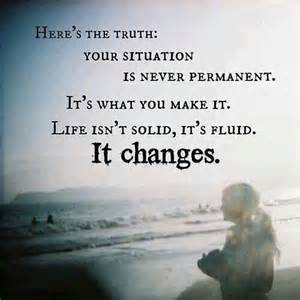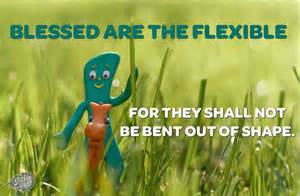
This week, I find myself spending time with my nephew on the campus of the college he will begin attending in August. We are here for the purpose of ‘new student orientation.’ Information from the college on this event states, “New Student Orientation (NSO) is a two-day experience aimed at providing your student with an introduction to life on campus, in the classroom, and in the (town in which this college is located). This college orientation is designed to help new students deal with the change from living at home and life at high school to living in a college dorm and life at college.”
This got me to thinking about orienting ourselves to change, something I think few of us do. Since an orientation is an introduction that guides one in adjusting to new surroundings or activities, it makes sense to me to think about how we orient ourselves to change. What basic information should we have to make it easier to deal with whatever is changing? How do we or should we prepare ourselves for change? How can we acquaint ourselves with the opportunities change may bring us?
Let’s take a look at how change may enter our lives. My nephew just graduated from high school. This is a natural change. It is a change we knew was coming and that for the most part, he and everyone in the family was excited about. As welcome as the change may be, there may be some fear associated with it. However, any fears that accompany a natural change do not seem to interfere with this type of change. (Natural changes fall into my category of minor changes.)

There is also gradual change. This is when change progresses slowly and we don’t seem to notice it happening. We see gradual changes in nature when the seasons change. In the part of the country I live in, spring ushers in gradual changes with the trees. Slowly, over weeks, they go from bare to having buds to sprouting leaves. We also see this type of change with some illnesses. Symptoms may slowly present themselves and after a while the illness becomes full blown and we ask, “What happened?” This type of change can create both positive and negative feelings and the result of changes in this category can be minor, major, or seismic. 
Sudden, unexpected change is the type that blindsides us. We don’t see it coming. A sudden death, an accident that turns one’s world upside down, the closing of one’s place of business without notice, or the loss of a job without warning all fit the category of a change that blindsides us. This type of change often elicits negative emotions such as alarm, panic, indifference, fear, anger, sorrow, grief, frustration, disappointment, and embarrassment. (Sudden, unexpected change falls into my category of seismic changes.)
Since change can enter our lives at any time and in any way, how do we prepare ourselves for it? How do we orient ourselves to deal with change and what it brings to us? Let’s look at the tips my orientation to change would include.
ALWAYS HAVE YOUR “MENTAL SUITCASE” PACKED. Since change is a constant in our lives and can happen at any time, always having this thought in the back of our mind will help when change does “hit” us, especially sudden, unexpected change. Remember, life is impermanent. Things do change. Sometimes the change is pleasant; sometimes, unpleasant. We need to be mentally prepared for the best case and the worst case scenario.

REV UP THE POSITIVE THOUGHTS. You are in charge of what you think so maintain a positive outlook and thinking so that when change does happen, flooding yourself with positive, encouraging, motivational thoughts and self-talk will be easy and seem natural. If change usually rocks you to your core and you typically start a negative discussion with yourself, you need to become stronger than those thoughts. You need to choose to keep options open, and the positive self-talk will help. Avoid the “oh, woe is me” thinking and instead think “what adventure can I go on now!” Remember, with positive thoughts you can get positive results.

OUR MINDS SHOULD BE LIKE PARACHUTES IN FLIGHT. Thomas Dewar said, “Minds are like parachutes – they only function when open.” If we are able to keep an open mind, we have a much better chance of being successful in a changed environment because we allow ourselves to experience new and different thoughts and ideas; we open ourselves up to other possibilities. An open mind frees us to see things from different perspectives which we might need to do in the changed environment.

HAVE A SUPPORT SYSTEM IN PLACE. No matter how change enters your life, your touchstones, your friends will be a huge help to you, especially in providing much needed support. They may be able to provide a different perspective ( a fresh pair of eyes) that helps you in dealing with what you may face.

BE READY TO EXPLORE OUTSIDE YOUR COMFORT ZONE. Our comfort zones are nice, but when change happens, we are often pushed outside the boundaries of our comfort zones. Someone one said, “If nothing changes, nothing changes.” All growth, all change happens outside the comfort zone. The following thought from Doe Zantamata helps develop a mindset for this tip, “If you were to open the front door and see that it had started raining, you wouldn’t slam it and curse the clouds because it was sunny just an hour before. You’d get an umbrella, and be on your way. Part of embracing change in life, is knowing that you will be able to adapt. There is comfort in the familiar, but new things can be better than before, or the change may even only be temporary. When faced with change that’s not in your control, adapt, and be on your way.”

LEARN TO LOVE DETOURS. Detours are deviations from the usual procedure or a direct course; it is a roundabout way temporarily replacing part of a route. Change can do just that – put deviations in the ‘usualness’ of life. Just as detours in our travels sometimes have us discover places we didn’t know existed, so to can a detour in life created by change. Be ready to explore what the detour has to offer. Your new route may be exciting and interesting and help you learn ‘stuff’ about yourself. You may find that your determination and commitment to do something, to come out on top of the change, to make the most of things gets renewed. The journey along the detour won’t be wasted as you will learn a lot about yourself and where you really need to be.

PRACTICE YOUR GUMBY MOVES. For those not familiar, Gumby is a clay animation figure (created by Art Clokey in 1953) and is known for his flexibility. Gumby’s flexibility came with his ability to move in all different directions. Let him be a symbol for us being adaptable in a changed environment. Randy Pausch said,” We cannot change the cards we are dealt, just how we play the hand.” If change throws us for a loop, we don’t have to give up or give in. We can choose to look at all the options in front of us and choose one that will help us move forward toward something we want to see in the change.

RECOGNIZE THAT CHANGE BRINGS OPPORTUNITY. Many difficult moments in our life happen when change is sudden and unexpected. We can choose to feel sorry for ourselves (oh, woe is me; why is this happening to me syndrome) or we can choose to treat the situation as an opportunity for personal growth and creativity (I am not happy this happened, but what can I learn from this syndrome). Think of the good, the positive that can come from the change. If you feel there are negative consequences to the change, have some coping mechanisms (some stress reduction strategies) ready to implement. 
TAKING TIME TO ADJUST IS OK. You may be well prepared for some change, but no matter how prepared you feel you are there is always something unexpected that can occur. All change (even that which we control and want) needs a period of adjustment. Taking time to ease into the new will minimize feelings of being overwhelmed. Taking things one day at a time will help make the change be more manageable.

So, my orientation to change includes nine items. These nine items are designed to help us prepare to adjust ourselves to the newness in the changed environment. Change is inevitable and when it “hits,” it takes us on a roller coaster ride, a journey with ups and downs: light and darkness, hope and fear, joy and sadness, sweet and bitter. If we are prepared for change, orient ourselves to change, have strategies at hand for when change does arrive, we will be much better able to successfully and positively survive the roller coaster ride!


 Picture this. I am driving down a highway doing the speed limit of 70. I am in the process of passing a tractor trailer when suddenly there is a white Mustang (an American automobile manufactured by Ford) wanting to go much faster than 70 close to my rear bumper! As soon as I could, I merged back into the driving lane MOVING OUT OF THE WAY of that fast Mustang. That moment got me to thinking that that Mustang is a lot like change.
Picture this. I am driving down a highway doing the speed limit of 70. I am in the process of passing a tractor trailer when suddenly there is a white Mustang (an American automobile manufactured by Ford) wanting to go much faster than 70 close to my rear bumper! As soon as I could, I merged back into the driving lane MOVING OUT OF THE WAY of that fast Mustang. That moment got me to thinking that that Mustang is a lot like change.

















